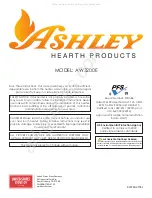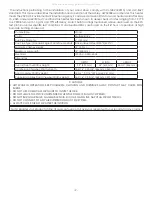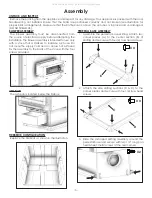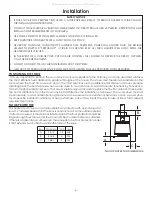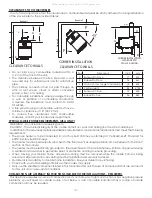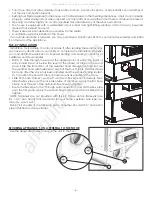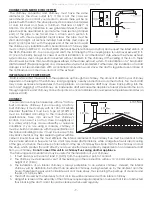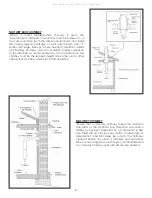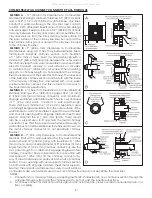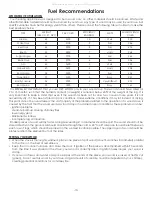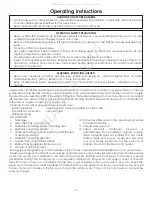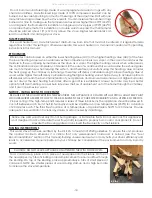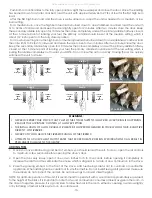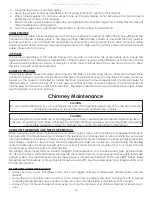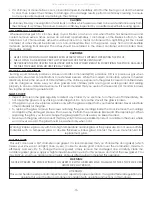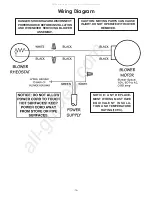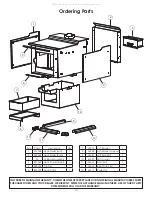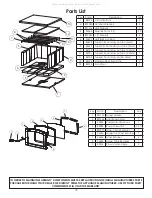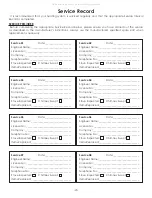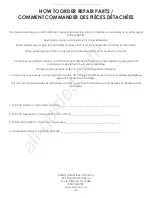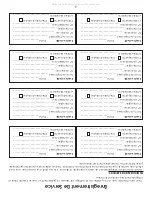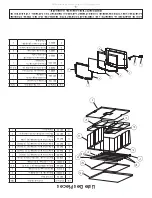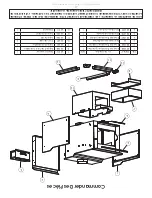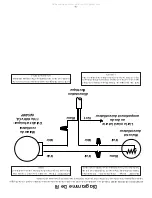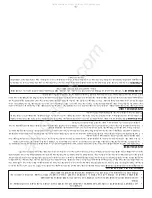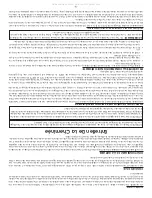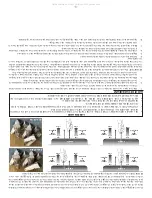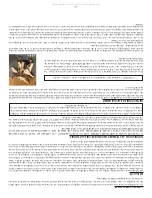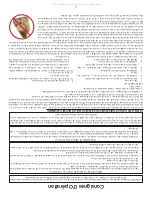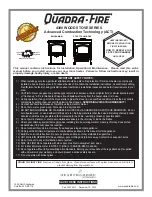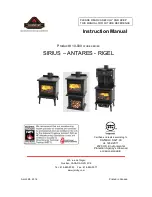
-15-
ASH REMOVAL & DISPOSAL
Whenever ashes get 3 to 4 inches deep in your firebox or ash pan, and when the fire has burned down and
cooled, remove excess ashes. Leave an ash bed approximately 1 inch deep on the firebox bottom to help
maintain a hot charcoal bed. Ashes should be placed in a metal container with a tight-fitting lid. The closed
container of ashes should be placed on a non-combustible floor or the ground, away from all combustible
materials, pending final disposal. The ashes should be retained in the closed container until all cinders have
thoroughly cooled.
CAUTION:
A chimney fire may cause ignition of wall studs or rafters which were assumed to be a safe distance away from
the chimney. If a chimney fire occurs, have your chimney inspected by a qualified expert before using again.
ATTENTION:
This wood heater needs periodic inspection and repair for proper operation. It is against federal regulations to
operate this wood heater in a manner inconsistent with operating instructions in this manual.
WARNING:
NEVER OPERATE THE STOVE WITHOUT A GASKET OR WITH A BROKEN ONE. DAMAGE TO THE STOVE OR EVEN
HOUSE FIRE MAY RESULT.
CAUTIONS:
•
ASHES COULD CONTAIN HOT EMBERS EVEN AFTER TWO DAYS WITHOUT OPERATING THE STOVE.
•
THE ASH PAN CAN BECOME VERY HOT. WEAR GLOVES TO PREVENT INJURY.
•
NEVER BURN THE STOVE WITH THE ASH TRAP OPEN. THIS WOULD RESULT IN OVER FIRING THE STOVE. DAMAGE
TO THE STOVE AND EVEN HOUSE FIRE MAY RESULT.
•
If a chimney or creosote fire occurs, close all dampers immediately. Wait for the fire to go out and the heater
to cool, then inspect the chimney for damage. If no damage results, perform a chimney cleaning to ensure
no more creosote deposits is remaining in the chimney.
SMOKE & CO MONITORS
Burning wood naturally produces smoke and carbon monoxide(CO) emissions. CO is a poisonous gas when
exposed to elevated concentrations for extended periods. While the modern combustion systems in heaters
drastically reduce the amount of CO emitted out the chimney, exposure to the gases in closed or confined areas
can be dangerous. Make sure your stove gaskets and chimney joints are in good working order and sealing
properly to ensure unintended exposure. It is recommended that you use both smoke and CO monitors in areas
having the potential to generate CO.
GLASS CARE
•
Inspect and clean the glass regularly to detect any cracks. If you spot one, turn the stove off immediately. Do
not abuse the glass door by striking or slamming shut. Do not use the stove if the glass is broken.
•
If the glass on your stove breaks, replace only with the glass supplied from your heater dealer. Never substitute
other materials for the glass.
•
To replace the glass, remove the screws retaining the glass moldings inside the door. Remove the moldings
and replace the damaged piece with a new one. Perform the procedure backward after replacing it. When
replacing the glass, you should change the glass gasket to make sure you keep it sealed.
•
Never wash the glass with a product that may scratch. Use a specialized product, available in the stores where
wood stoves are sold. The glass should be washed only when cold.
GASKET CARE
This unit’s door uses a 3/4” diameter rope gasket. It is recommended that you change the door gasket (which
makes your stove door air tight) once a year, in order to ensure good control over the combustion, maximum
efficiency and security. To change the door gasket, simply remove the damaged one. Carefully clean the
available gasket groove, apply a high temperature silicone sold for this purpose, and install the new gasket. You
may light up your stove again approximately 24 hours after having completed this operation.
Warning: Replace glass only with 5mm high temperature ceramic glass of the proper size. Do not use substitute
materials such as tempered glass or double thickness window glass! Contact the stove manufacturer for
replacement glass.
All manuals and user guides at all-guides.com

